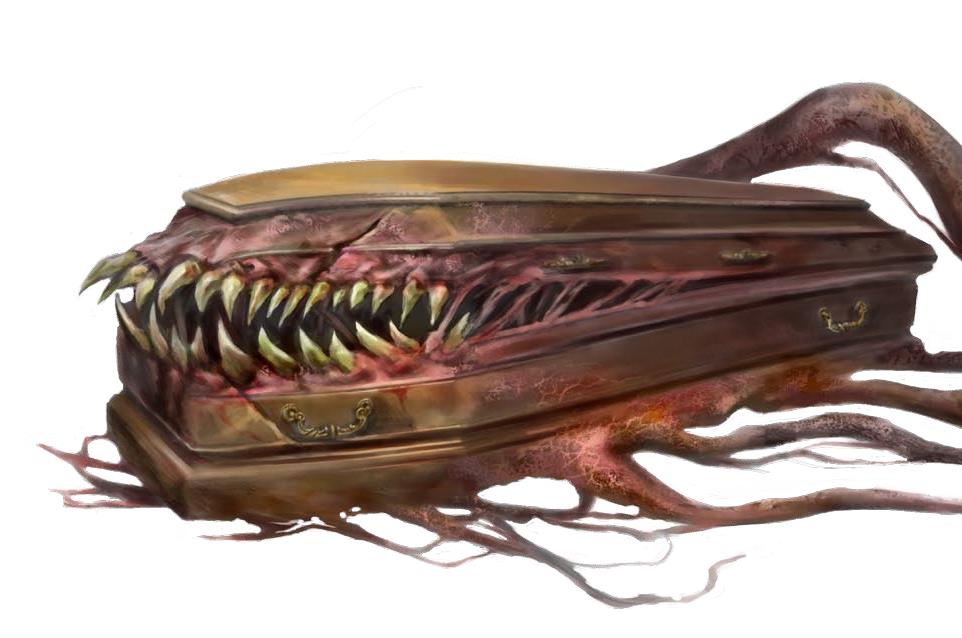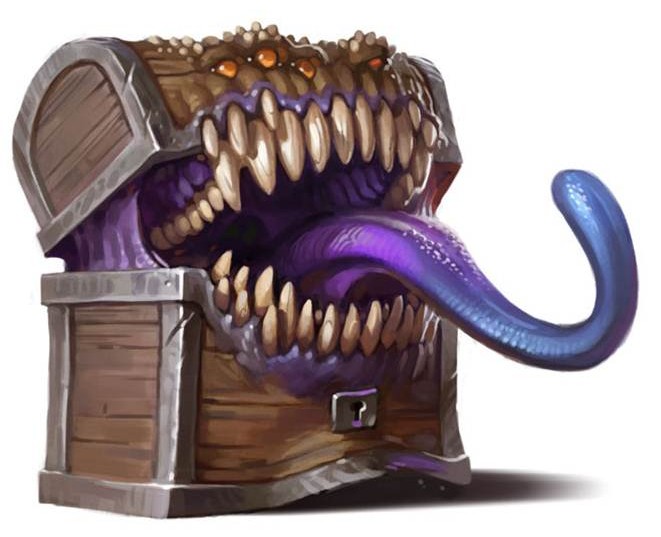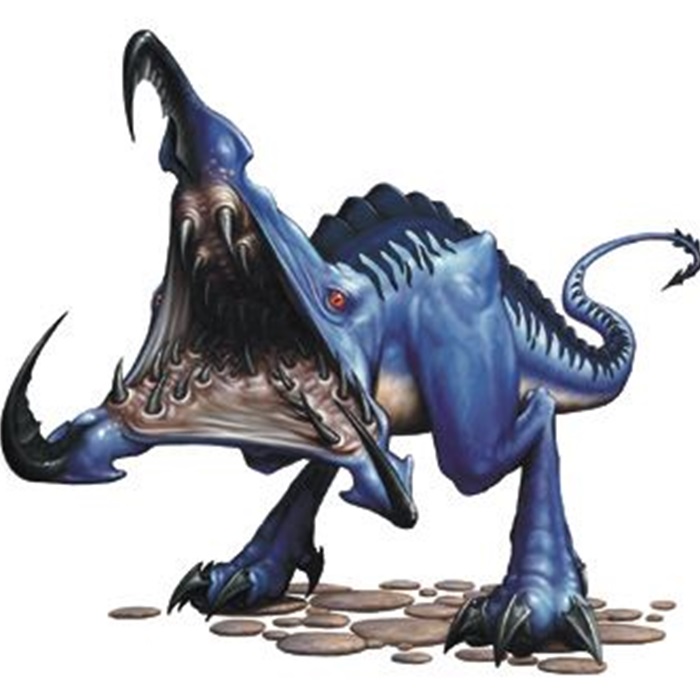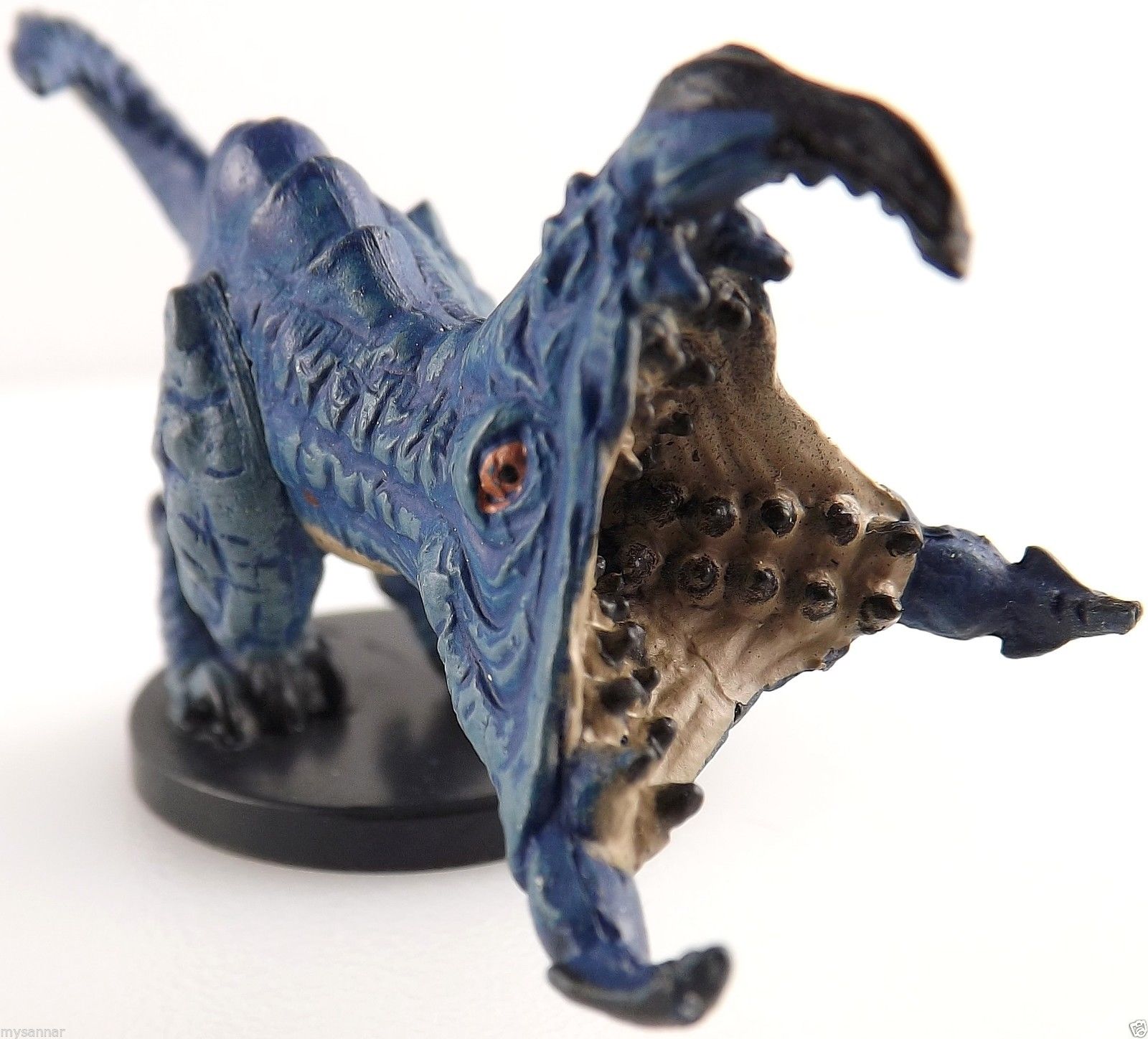This article was originally written in 2000-01. It has never been published. It is a companion piece to Monstrous Tactics: Mimics.
The mimic has long been the bane of adventurers. Their penchant for using their natural shapechanging abilities to disguise themselves as desirable objects – most commonly, treasure chests –  often serves as the lure which has led many to their doom. Tough, strong, tenacious, and crafty, the best way to beat a mimic is to simply keep your distance.
often serves as the lure which has led many to their doom. Tough, strong, tenacious, and crafty, the best way to beat a mimic is to simply keep your distance.
HELPFUL TIPS
- Find the mimic before it finds you
- Keep your distance
- Use ranged attacks to wear it down
- Don’t be afraid to bargain
PREPARATION
GRAPPLE: Mimics are coated in a thick, poweful adhesive which they will use to every possible advantage. If they succeed in hitting you with one of their pseudopods, you’ll quickly find yourself stuck fast in a slimy grapple. So if you know you’re entering the lair of a mage who loved his mimics, you’d better be prepared for grappling: This means spells with casting times less than 1 action, light weapons, and so forth. The Escape Artist skill is particularly invaluable.
SPELLS: Freedom of movement will help you free anyone who gets caught by the mimic. You’re also going to want to prep ranged attacks, while avoiding attack spells which require you to touch the mimic – shocking grasp becomes a serious liability when you’re dealing with the fantasy equivalent of a tar baby.
EQUIPMENT: Strong alcohol breaks down the mimic’s adhesive, so you might want to bring a couple of bottles along. If you don’t end up using them, you can always use them for the victory celebration afterwards, after all.
SKILLS: The best way to defeat a mimic is to detect their presence before they can surprise you. This means you’re going to need sharp eyes, and a high Spot skill.
TACTICS
USE THE ROGUE, LUC: As noted above, your best bet against a mimic is early detection with your Spot skill. Not only is this a class skill of the rogue, but the mimic’s preference for assuming the shape of a treasure chest makes it likely that you’ll be sending the rogue in to check for traps, anyway. The rest of the party should consider the rogue to be their first line of defense against a mimic – and the rogue himself should always make sure to run Spot checks on suspicious objects before closing in to detect the traps: It does you no good to know that the chest is really a mimic, if the mimic is already sitting three inches in front of your face.
BARGAIN: Mimics are more intelligent than many adventurers give them credit for, and are actually able to speak Common. If things are going badly – or if you just aren’t interested in facing off against a mimic at the moment – don’t be afraid to bargain with them. Most mimics are more than willing to let you walk away with your lives… in return for some food or treasure, of course.
KEEP YOUR DISTANCE: Mimics are at their most dangerous when they have you within reach – at a distance, their threat is negligible. Another factor to your advantage is the mimic’s relatively slow speed (about one third that of a human). Spread out, keep your distance, try to avoid or escape tight quarters, and pepper the mimic with ranged attacks.
AVOID SWORDS: The mimic is coated in a strong adhesive – if you hit it, your weapon will most likely become stuck fast. Instead, as has been said, you should keep your distance – peppering it with disposable range weapons (such as arrows) and spells. (Note that the adhesive will dissolve once the mimic is dead – allowing you to retrieve your ranged armament without any problems.)

 threat – and a DM who knows how to use them well will always have his players just a little bit unsure of whether or not what they see is truly what they see.
threat – and a DM who knows how to use them well will always have his players just a little bit unsure of whether or not what they see is truly what they see. dangerous ability to shift at will between the material and ethereal planes – striking out at their prey from a universal hiding place of which few are aware, and fewer still can hope to detect. Their dangerous, ephemeral attacks can prove the bane of any who are not prepared for their assault.
dangerous ability to shift at will between the material and ethereal planes – striking out at their prey from a universal hiding place of which few are aware, and fewer still can hope to detect. Their dangerous, ephemeral attacks can prove the bane of any who are not prepared for their assault. particularly against neophyte players or characters who lack the experience to figure out where the lumbering blue behemoth which attacked them appeared from, and where it disappeared to again. In fact, you can use an encounter such as this to introduce your players to the concept of planar travel – perhaps paving the way for future adventures.
particularly against neophyte players or characters who lack the experience to figure out where the lumbering blue behemoth which attacked them appeared from, and where it disappeared to again. In fact, you can use an encounter such as this to introduce your players to the concept of planar travel – perhaps paving the way for future adventures.









